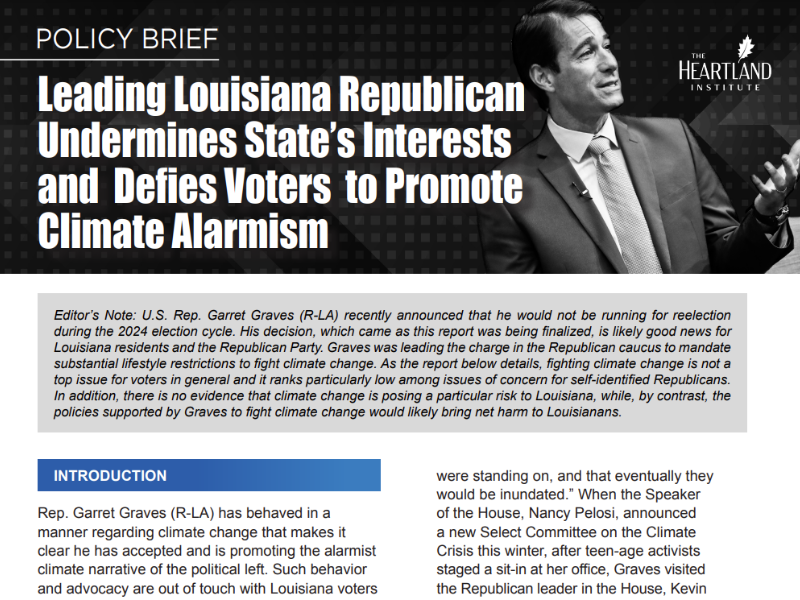The Environmental Protection Agency’s recently released Latest Findings on National Air Quality confirms the good news that America’s air quality is improving. Unfortunately, many media outlets and environmental activists insist on telling the public otherwise.
The report details the positive trends for virtually every major pollutant covered by the Clean Air Act (CAA). It states that “since 1970, aggregate emissions of the six principal pollutants tracked nationally have been cut 25 percent.” Consequently, air quality has “shown improvements over the past 20 years for all six principal pollutants.” Other CAA programs, such as the one designed to fight acid rain, have also yielded emission reductions.
The report acknowledges many parts of the country are not yet in compliance with all of the CAA’s targets. Nonetheless, the air pollution problems the CAA was enacted to address appear well on their way towards resolution.
Media Ignores Good News
However, good news is no news, especially on the environment, and the media largely ignored this report. By contrast, scary claims of poor air quality from activist organizations get far more attention.
For example, the American Lung Association’s annual State of the Air, which invariably gives a failing grade to more than half the nation’s counties and cities, always generates massive coverage. And, the U.S. Public Interest Research Group’s heavily publicized Danger in the Air not only painted a gloomy picture of air quality, but also blamed President George W. Bush for allegedly trying to allow polluters “to emit millions of tons of additional smog-forming pollutants into our already smoggy skies.”
Oddly, these pressure group studies relied on the same EPA data summarized by the agency in its report. In other words, the actual conclusions from the agency responsible for compiling the evidence received far less media attention than the misleading spin from third parties.
Reporters for the Washington Post and New York Times did cover the release of the EPA report, but in a manner that missed the boat entirely. Instead of emphasizing the positive air quality trends, both faulted the Bush EPA for not including a section on global warming. This “omission,” of course, makes perfect sense, as the report focuses on the emissions targeted under the CAA, which does not regulate carbon dioxide or other so-called greenhouse gases. In addition, the federal government already cranks out a wealth of global warming-specific studies. Nonetheless, according to the Post and Times, the only real story in EPA’s report was the Bush administration’s failure to use it to scare people about global warming.
Cleaner Air in the Future
The positive air quality trends show few signs of slowing down, indicating the progress will continue. Further, a wave of tough new provisions, including several Clinton-era regulations affecting motor vehicle emissions, are scheduled to take effect over the next five years.
Notwithstanding the politically motivated assertions to the contrary, President Bush is not doing anything that would jeopardize these continued gains. But those who have painted a misleadingly pessimistic picture of air quality have been no more truthful in attacking the President’s handling of the issue. While there is room for legitimate debate on Bush’s proposed changes to the CAA, including the Clear Skies Initiative and his plan to reform the New Source Review program, claims that the administration is setting the stage for backsliding on air quality are pure nonsense.
In all likelihood, future EPA reports will show additional progress. Indeed, the air will probably be measurably cleaner at the end of the Bush administration than it was at the end of Clinton’s. But don’t expect very many people to hear about it.
Ben Lieberman is a senior policy analyst with the Competitive Enterprise Institute. This article first appeared on TechCentral Station and is reprinted here with permission.



